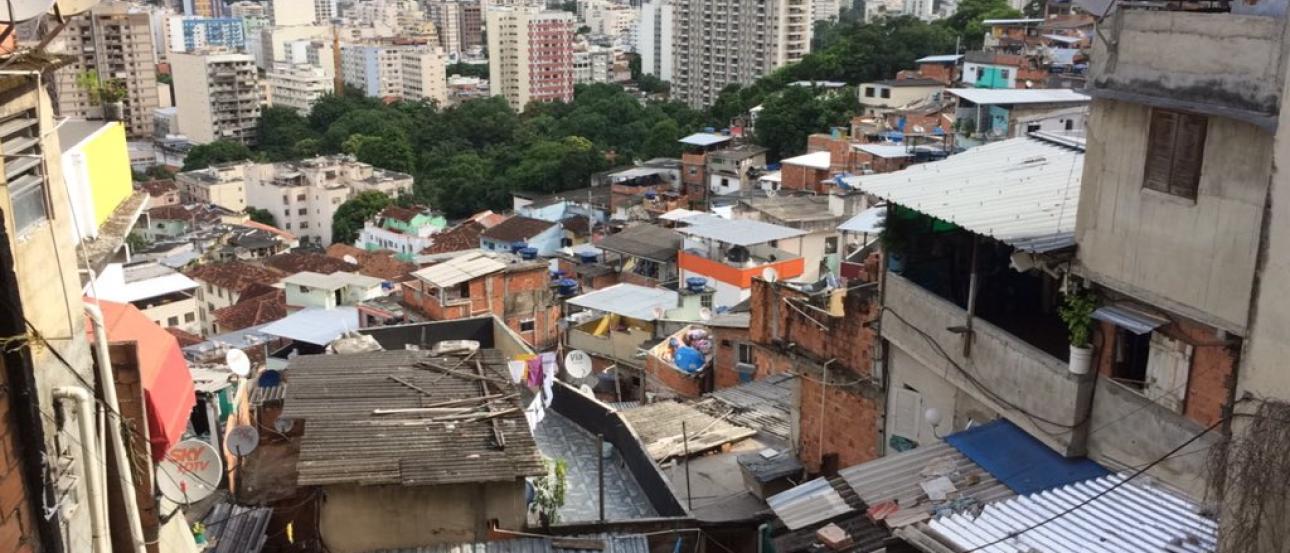Once you’ve landed at Galeao International Airport and start your journey to your new host home in Rio de Janeiro, you’ll notice small neighborhoods throughout the city. These are called Favelas and they’re home to the majority of Brazil’s working class. You may have heard a lot about what these small communities snuggled into the city are like, or you may be completely oblivious to their history in Brazil like I was. Luckily for those of us who study in Brazil, you’ll always have an opportunity to learn about these communities and the people who live in them. The important thing to remember is although you may be studying and living in Rio, you’re still a guest to large city with a lot of history you won’t completely understand – and that’s ok.
Our first Field Study was a visit to Santa Marta, the very first favela to pacified, which means the city is paying for police occupancy to fight drug traffickers and other illegal crime going on in these communities. Favelas are often described as slums, and compared to the rest of Rio de Janeiro I can understand why. Favelas are usually blocked off from the rest of the city and are devoid of basic necessities like irrigation, roads and waste management. This makes the smell of raw sewage ample throughout the communities, especially on hot days. Lack of roads make picking up trash impossible and extremely difficult to carry anything up endless stairs. Favelas are usually up hills, so walking to the top of a favela can be very strenuous for the elderly, young or disabled. It’s not easy to live in a Favela, but for hundreds of Rio residents it’s their life and they’re always trying to make the best of it.
The reason I feel uncomfortable calling favelas ‘slums’ is because the favelas are home to so many hardworking and generous people. It’s oppressive and infuriating that the Brazilian government overlooks the needs of the people in the communities who need it most. I’ve always felt the most beautiful things come from some of the harshest environments and our guide around Santa Marta, Sheila, really showed us that. After climbing to the top of Santa Marta, you could see the stark juxtaposition between the structure and inequalities of the favelas against the tall buildings of affluent neighborhoods like Leblon and Copacabana.
We learned so much about the daily obstacles of living in a favela and the overwhelming realities of decades of forced oppression. Yet in the middle of all this is the strong sense of a vibrant culture. Santa Marta is not only known for being the first pacified Favela, it’s also known as the back drop for Michael Jackson’s music video for “They Don’t Really Care about Us”. I suppose walking through a Favela with someone who knows as much as our guide did is really the only way to truly begin to understand the harsher realities behind the beautiful skyline of Rio de Janeiro.

Angie Martinez
<p>My name is Angie, I'm a junior at the University of Illinois at Chicago. I'm majoring in Sociology and minoring in Linguistics. I love learning about people and cultures around the world through music, art and literature.</p>






